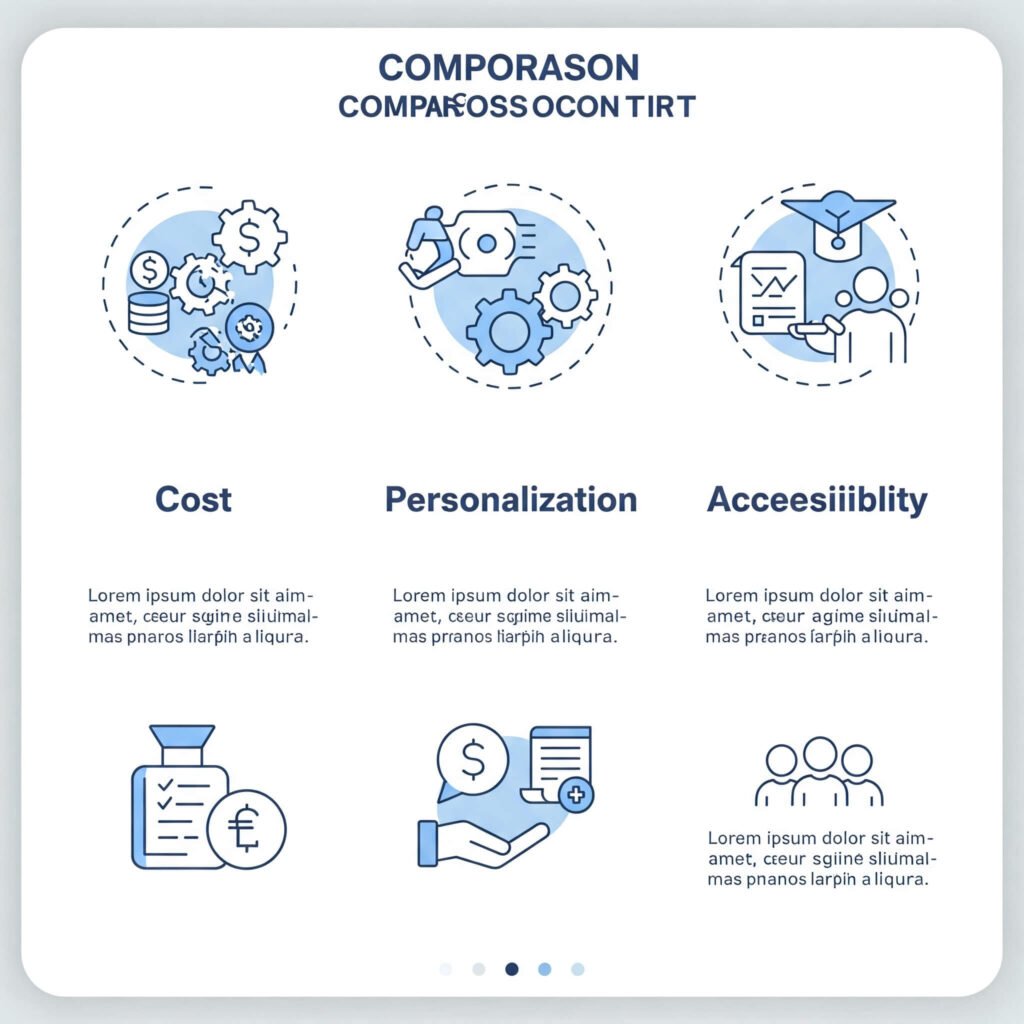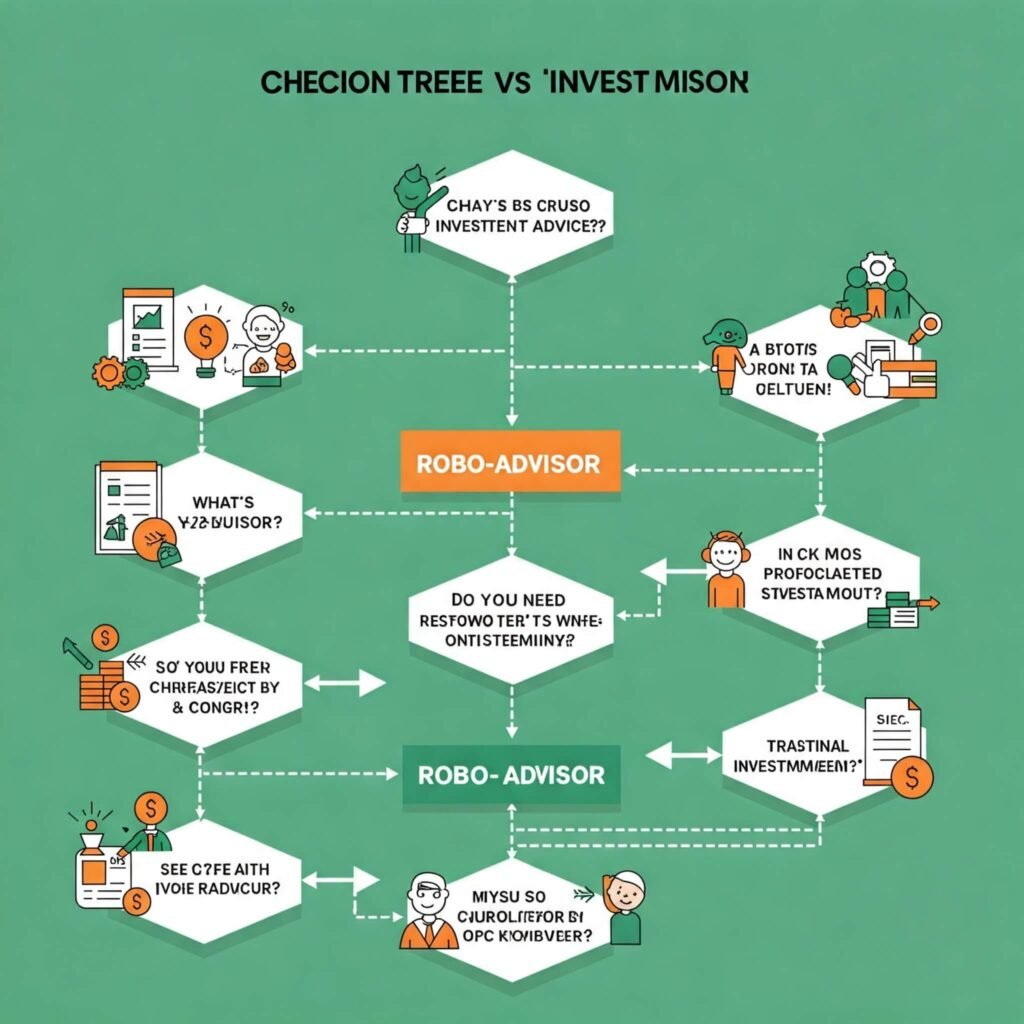Okay, so robo-advisors vs. traditional investing—what’s the deal? I’m in this dingy Boston coffee shop, the kind with sticky tables and baristas who side-eye you, my phone’s at 3% battery, and I’m trying to figure out if I should trust a robot or some fancy advisor with my measly $250. Like, seriously, I’m no finance bro—just a guy with a stained hoodie and a dream to invest money without going broke. My dive into automated investing and traditional investing was a total mess, with screw-ups and coffee spills galore. Here’s my raw, slightly embarassing take, typos and all, on which one might work for you.
Why I Even Tried Robo-Advisors vs. Traditional Investing
Last fall, I was broke, scrolling X in my freezing apartment, the radiator hissing like it was laughing at me. I had $200 saved and wanted to grow wealth, but I didn’t know squat about robo-advisors or traditional investing. I saw a post about automated investing apps and thought, “Yo, that sounds chill.” But then my coworker was all, “Nah, get a real advisor, robots are sketchy.” I was so confused, and honestly, a bit embarrassed I was 29 and clueless. So, I tried both, because apparently I thrive on chaos.
What’s the Deal with Robo-Advisors vs. Traditional Investing?
I had to google what robo-advisors vs. traditional investing even means, and I found this NerdWallet piece that didn’t make me feel like a total idiot. Here’s the breakdown:
- Robo-Advisors: Apps like Wealthfront or Betterment that use fancy algorithms to pick investments. Cheap, easy, good for noobs like me.
- Traditional Investing: You hire a human financial advisor to build your portfolio. More personal, but hella pricey.
- Big Difference: Robo-advisors are like Netflix auto-playing your investments; traditional investing is like a personal chef who might charge you an arm and a leg.
I was vibing with automated investing because I’m cheap, but I also met a real advisor, and hoo boy, that was an adventure.

My Robo-Advisor Fumble: Easy, But I Panicked
I started with Wealthfront, a robo-advisor that’s super simple. And tossed in $100, answered some questions about my goals (like, maybe not living paycheck to paycheck?), and it spit out a portfolio of ETFs. Felt like a genius, sitting on my couch with a stale bagel, watching my money “grow” by $1.50. But then the market dipped, and I was refreshing the app like a nutcase, crumbs all over my keyboard. Automated investing is great for low-effort, but it’s not instant cash. Investopedia explains how these apps work without all the jargon.
My dumbest move? I kept changing my risk settings because I thought I could outsmart the robot. Yeah, no. My portfolio tanked a bit, and I was stress-eating pretzels, muttering, “Why am I like this?”
My Traditional Investing Disaster: Felt Fancy, Cost a Ton
Then I tried traditional investing with a financial advisor I found through a friend’s friend. Picture me in a Zoom call, in my ratty T-shirt, talking to this dude in a tie who probably owns a penthouse. He was chill, but I felt like I was failing a test. He suggested some stocks and bonds, but the fees? Yikes. I could’ve bought a month’s worth of coffee. I also worried he was just in it for the money. The Motley Fool has solid tips on what to ask advisors.
Biggest screw-up? I didn’t ask about fees upfront and nearly fainted when I saw the bill. I was in my apartment, staring at my bank account, thinking, “This is why I buy off-brand cereal.”
Outbound Link: Investopedia’s Guide to Robo-Advisors for a deeper dive into automated investing.

Robo-Advisors vs. Traditional Investing: My Messy Pros and Cons
Here’s my take on robo-advisors vs. traditional investing, straight from my caffeine-fueled disasters:
- Robo-Advisors:
- Pros: Dirt-cheap (like, 0.25% fees), stupid easy, great for invest money newbies. I set up Wealthfront half-asleep.
- Cons: Feels like you’re shouting into the void. No one to text when the market crashes.
- Traditional Investing:
- Pros: You get a human who can explain stuff. My advisor saved me from a dumb stock pick once.
- Cons: Fees are brutal (1-2% hurts), and I felt judged for my tiny portfolio.
I’m torn, y’all. Automated investing is my jam because I’m lazy, but traditional investing felt more legit when I was freaking out.
Outbound Link: Forbes on Financial Advisor Costs for more on traditional investing expenses.
How to Pick Between Robo-Advisors and Traditional Investing
Choosing robo-advisors vs. traditional investing depends on your vibe. Here’s what I learned the hard way:
- Your Cash: If you’re scraping by like me, robo-advisors are way cheaper. Wealthfront’s fees didn’t make me cry.
- Your Comfort: Need someone to hold your hand? Go traditional. I liked having someone to call at first.
- Your Goals: Saving for a car? Robo-advisors are fine. Big plans like retirement? Maybe a human.
- Your Personality: Control freak? Traditional. Chill and broke? Robo’s your guy.
Outbound Link: CNBC’s Review of Wealthfront for insights into robo-advisor performance.

The Emotional Chaos of Both
Robo-advisors vs. traditional investing is like picking between a self-checkout machine and a cashier who might upsell you. Automated investing made me feel lazy but smart, until the market dipped and I had no one to yell at. Traditional investing made me feel like a grown-up, but also like I was being scammed by a fancy suit. One night, I was up late, laptop glowing, coffee cold, googling “are financial advisors worth it?” while my roommate’s dog stared at me like, “You okay, bro?”
Dumb Mistakes I Made (Don’t Do These)
I messed up so much, so here’s my advice:
- Not checking fees: I got hit with a traditional investing bill I didn’t expect. Compare fees on Forbes.
- Being shy: I didn’t ask my advisor enough questions. Speak up!
- Panicking: Markets go up and down. I learned this after crying over a $15 loss.
- No plan: I tried both at once and got overwhelmed. Pick one, stick with it.
Outbound Link: Vanguard’s Personal Advisor Services for a hybrid robo-human approach.
Wrapping Up: Just Pick One, Dude
I’m no finance guru, just a dude with a sticky desk and a dream to grow wealth. My coffee shop table’s a disaster, my phone’s cracked, but I’m figuring out robo-advisors vs. traditional investing. Automated investing is great if you’re broke or lazy; traditional investing is better if you want a human to talk you off a ledge. Both can work, both can suck. Just start somewhere.




